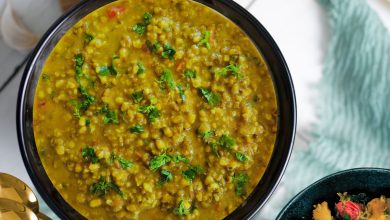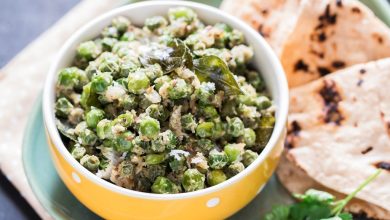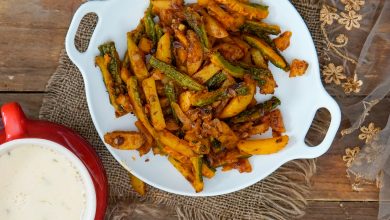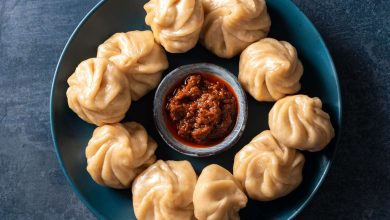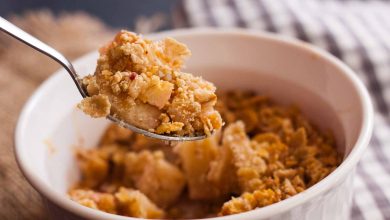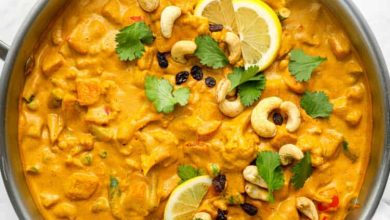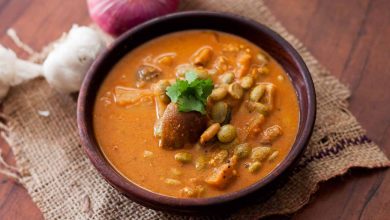Heavenly Homemade Yeast Bread: Easy Step-by-Step Recipe
Basic Homemade Bread Recipe Using Yeast
Embarking on the delightful journey of baking your own bread is an incredibly rewarding experience, and this basic homemade bread recipe using yeast is a perfect place to start. This recipe yields two beautiful loaves, perfect for breakfast or as an accompaniment to any meal. Let’s delve into the ingredients and step-by-step instructions that will guide you through this wholesome baking adventure.
Ingredients
| Ingredient | Quantity |
|---|---|
| All Purpose Flour (Maida) | 6-1/2 cups |
| Active Dry Yeast | 2 teaspoons |
| Sugar | 3 tablespoons |
| Salt | 1 tablespoon |
| Lukewarm Water | 2 cups |
| Sunflower Oil (or any oil) | 2 tablespoons |
Nutritional Information (per serving)
| Nutrient | Amount |
|---|---|
| Calories | Approximately 150-200 (varies based on portion) |
| Protein | 4g |
| Carbohydrates | 30g |
| Fat | 2g |
| Fiber | 1g |
| Sodium | 200mg |
Preparation Time
| Time | Duration |
|---|---|
| Preparation | 240 minutes |
| Cooking | 30 minutes |
| Total | 270 minutes |
Servings
| Servings | Quantity |
|---|---|
| Total Servings | 2 |
Cuisine and Diet
| Cuisine | Type |
|---|---|
| Continental | World Breakfast |
| Diet | Vegetarian |
Instructions
-
Preparation: Begin your bread-making journey by gathering all your ingredients. It’s essential to have everything at hand to ensure a smooth process.
Related Articles -
Mixing Dry Ingredients: In a large mixing bowl or the bowl of a stand mixer, combine the all-purpose flour, salt, sugar, and active dry yeast. If you’re using yeast that requires proofing, set it aside for now to mix with the wet ingredients later.
-
Combining Ingredients: Blend the dry ingredients well to ensure an even distribution of the yeast, salt, and sugar throughout the flour.
-
Adding Wet Ingredients: Gradually add the lukewarm water and sunflower oil to the dry mixture. If you’re using proofed yeast, include it at this stage. Begin mixing and kneading the dough until it achieves a smooth consistency.
-
Kneading: Knead the dough for about 10 to 15 minutes. This crucial step helps develop gluten, which is essential for the structure of your bread. Don’t worry if the dough is sticky; this is perfectly normal.
-
First Rise: Once kneaded, cover the bowl with a damp cloth or plastic wrap and let it rest in a warm, draft-free area for approximately 2 hours. During this time, the dough should double in size.
-
Shaping the Loaves: After the first rise, prepare two loaf pans (9 x 4 or 9 x 5 inches) by greasing them lightly. Turn the risen dough out onto a floured surface. Divide it into two equal portions and shape each into a loaf.
-
Second Rise: Place the shaped loaves into the greased loaf pans, cover them, and allow them to rise for another 2 hours. The dough should expand again, filling the pans.
-
Preheating the Oven: While the dough is undergoing its second rise, preheat your oven to 175°C (about 350°F).
-
Baking: Once the loaves have risen sufficiently, place them in the preheated oven and bake for about 30 to 35 minutes. You’ll know they’re done when the crust turns a lovely golden brown.
-
Cooling: After baking, remove the loaves from the pans and immediately invert them onto a cooling wire rack. Tap the bottom of the loaves gently; they should sound hollow, indicating they’re fully baked. Allow the bread to cool for at least 10 to 15 minutes before slicing.
-
Serving: Once cooled, slice the bread and serve as desired. Whether you enjoy it plain, with butter, or as a base for your favorite sandwiches, this homemade bread is sure to bring a smile to your face.
Conclusion
Baking bread from scratch not only fills your home with a comforting aroma but also rewards you with delicious loaves that are far superior to store-bought varieties. With just a few simple ingredients and some patience, you can create this basic homemade bread using yeast, perfect for any meal of the day. Enjoy the fruits of your labor and share with family and friends, or savor each slice yourself! Happy baking!

